|
BULB LOG 04 --- 24th January 2007
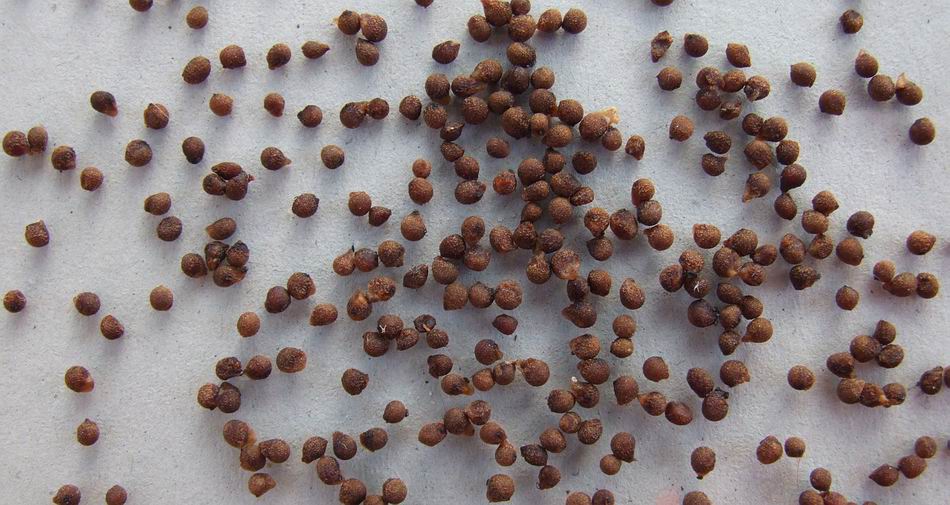
Crocus seeds
As we are all receiving seeds from various exchanges and lists I thought that I would continue on the seed theme for this week's log.
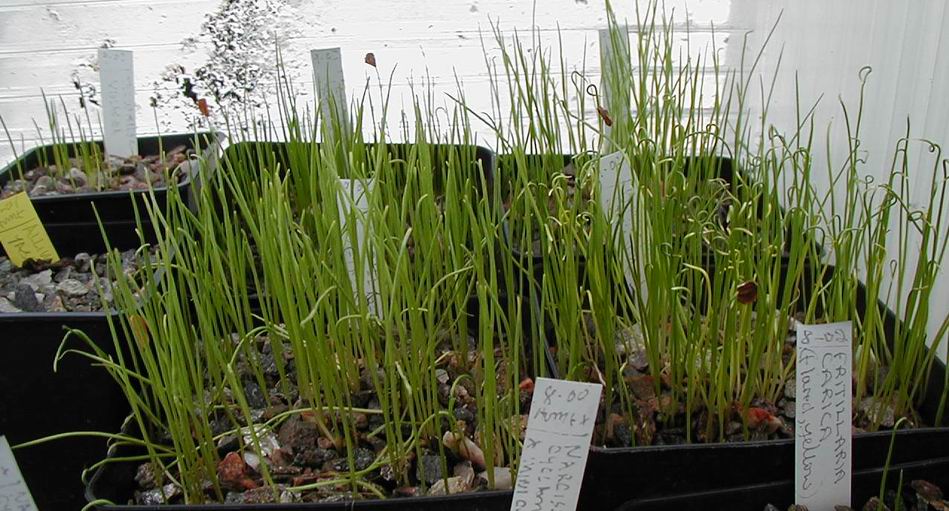
Fritillaria seed germinating
Firstly I want to address our unreasonable expectation of always achieving high germination rates. In the wild two bulbs only need two of their seedlings to survive to maturity to maintain the population, if they produce four offspring then the population doubles and if they were as successful as we expect in our gardens then bulbs really would rule the world. The simple truth is that in any seed capsule not all the seeds are necessarily viable in the first place and many may not survive the wait, be it in the wild, cultivation, or a seed exchange, for the optimum conditions to come around to allow them to germinate.
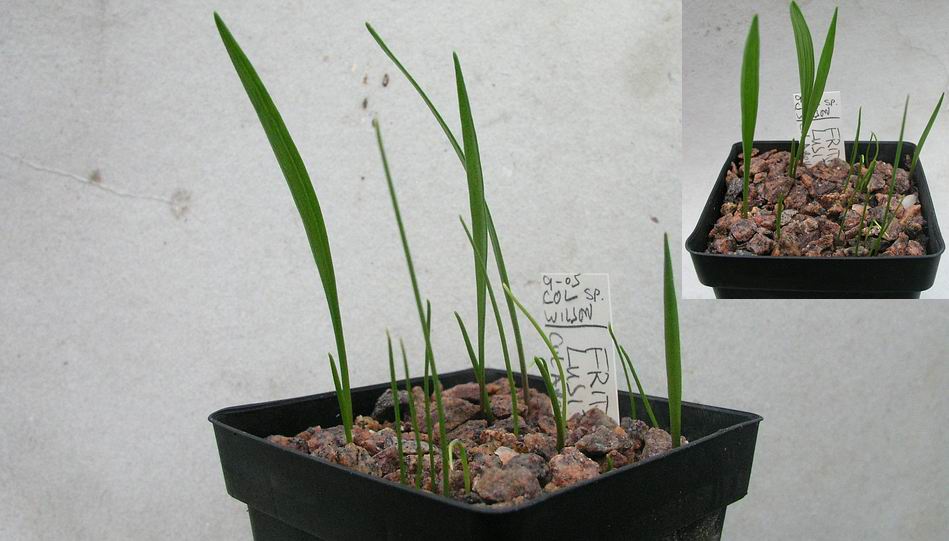
Fritillaria sporadic germination
Sporadic germination has evolved in wild populations to counter act the possibility of bad climatic conditions wiping out an entire generation of seedlings. If all the seeds in the wild germinated at the same time then a drought or an unseasonable freeze came along, all the seedlings could perish. However if some germinate immediately, others after a week, then more after a month and some wait until the following year, then there is a far better chance of survival of the genes of the parents into future generations and so sporadic germination gives a plant an evolutionary advantage. This is one of the reasons that we should not be in a hurry to repot bulb seedlings: I always wait until at least the end of the second year of growth if not longer or I might miss the later germination.

Narcissus in bulb house
In cultivation we expect a good germination from our bulb seed in the first year and often repot the seedlings far too early, thereby losing the seedlings that are primed to germinate in the second or third year and so we have unwittingly become an evolutionary factor. We are guilty of repeatedly selecting the seedlings that germinate well in their first period and so cultivated populations can start to differ from wild populations. We also select our bulbs for the best looking forms, the best shape, the best colour, the most robust, the most compact, etc and that is often how we lose the variation that can be seen in wild populations. When selecting your seedling plants, bulbs or not, always consider that the very beautiful form may also be the form that is most susceptible to disease, bacterial or fungal attack and the ugly duckling of the flowers may just be the tough survivor. I urge you all to grow a wide range of your seedlings to keep as wide a genetic base in our gardens as we can and not just to sele
ct out the pretty ones.
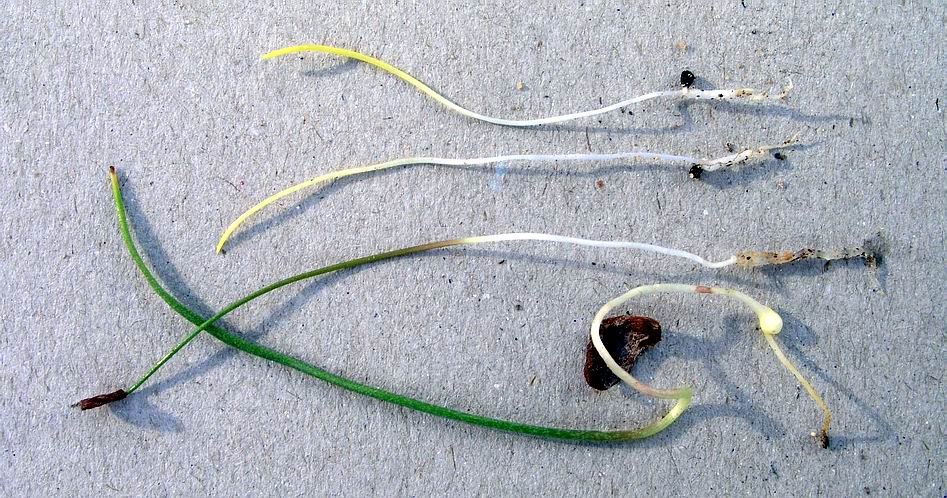
Narcissus and fritillaria seeds germinating
Having looked briefly at sporadic germination I now want to consider what triggers the germination. Obviously to get sporadic germination seeds must react at differing rates to temperature, light and moisture levels which are the key factors of germination. Much excellent work has been carried out by the likes of Norman Deno on this subject and you should make yourself familiar with those findings but we can also conduct our own trials.
I firmly believe that each seed has a 'time window' like its parents' so it has a certain time when it looks to see if the conditions are favourable for growth. If the conditions are good then growth will start if the conditions are not favourable within the time window then the bulb or seed may opt to stay in dormancy until the next time window comes around. Whether we can create conditions that will over-ride the built-in sporadic nature of wild seed and encourage a 100 percent germination I have my doubts but with cultivated seeds we should be able to find the optimum conditions to break dormancy for the majority of the viable seeds. Another fact to be aware of is that even seeds from a single capsule will each have a slightly different requirement to break dormancy as well as a varying tolerance to conditions such as temperature and moisture. If we could all have the identical seeds from a single capsule and all grew them in our varying climates then we might all expect a similar number of bulbs to matur
e but they would not be the same seeds that survive for us all. The ones that would have survived for me would have been able to adapt to the cooler moist growing conditions that we have in the North East of Scotland while heat and drought tolerance would be the factors that would govern which seedlings would survive in the hotter south of the UK. This is another good reason to raise your bulbs from seed as you lose the ones that are unable to adapt to your condition at an early stage of growth when the loss does not seem so drastic.
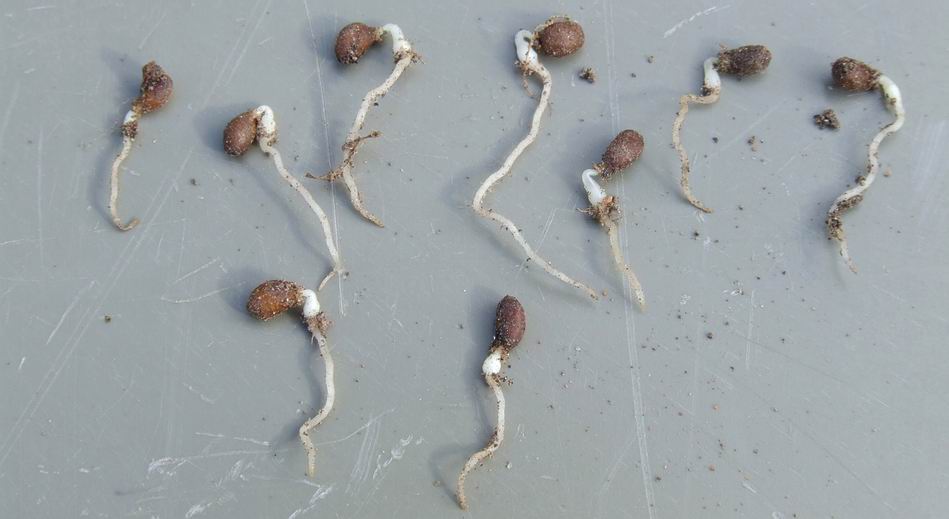
Trillium seeds germinating
Some bulbs have complicated hypogeal germination tactics where the first phase of germination is all under ground and the first leaf may not appear until a year after germination has actually occurred. Other seeds require several periods of cooling and warming; some just require one cold spell followed by a warm period and others have no requirement of a chilling period at all so there is no simple answer. The methods described by Norman Deno et al work well in his trials in cultivation, and I recommend his guidance, but, in the wild, nature is a patient gardener who does not mind if seeds take two or three years to germinate, nor if only two or three seeds out of the hundreds scattered germinate at all. I have to admit that I have swung from being an impatient gardener who expected a good germination in the first year, when we only sowed twenty or fifty seed pots a year, to one who is patient and prepared to wait a year or two now we count our seed pots in the hundreds. The exciting thing is once you are thr
ee years down the path of growing bulbs from seeds and you sow seed consistently each year you should also have new flowering bulbs every year.
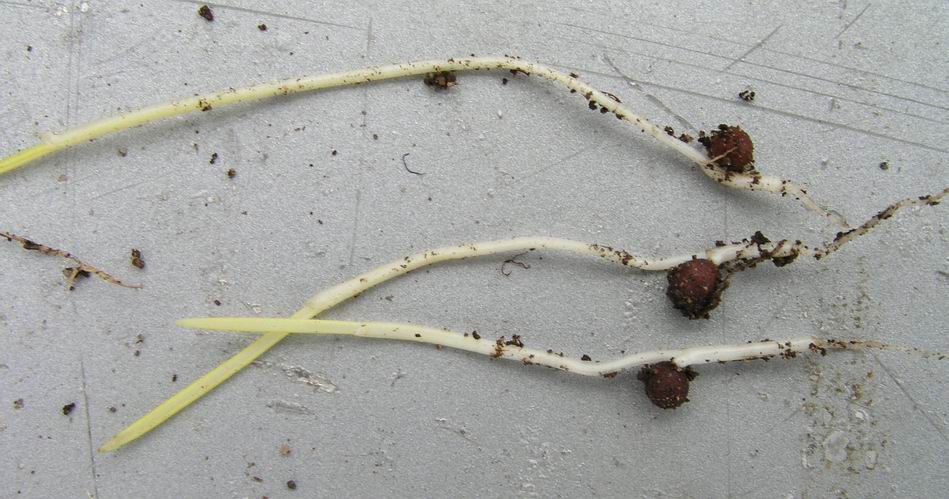
Crocus seedlings germinating
When we sow the seeds is a big factor in when we can expect the germination to occur. I will not sow any Fritillaria seeds that I get after December until the next September because I believe that I have missed the time window, the exception to this was the North American frits that I showed in last weeks log, while I am happy to sow Crocus seeds whenever I get them. If I did sow the frit seed now I may get an odd one germinating, due to the sporadic nature of germination, but the biggest majority of them would not germinate until next spring and our cool moist summers cause many of the frit type of seeds to rot unless they are dried out under glass in the summer months. This is my adaptation to our climate and our local conditions yours may be completely different and so you may adopt a slightly different strategy. Copying my methods can be a good starting point but trialling different methods in your garden conditions and carefully observing and reacting to the results is by far the best way to maximise y
our own success.
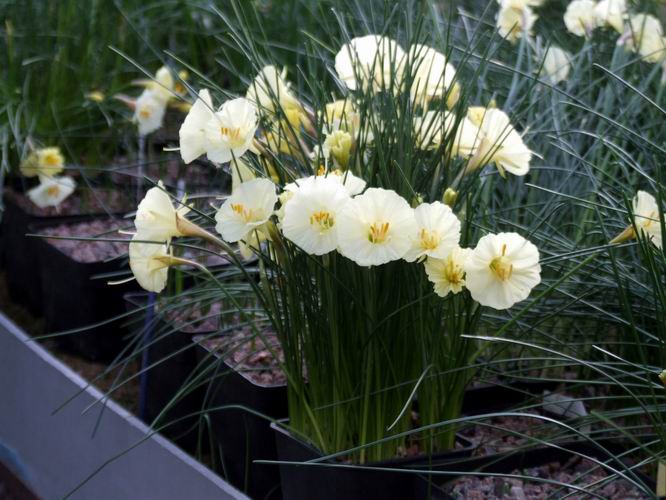
Narcissus romieuxii JCA 805
Why do I and others, keep telling everyone to raise your bulbs from seed when it can take anything from three to ten years to get a flowering sized bulb? Firstly the thrill of seeing the first bulb that you have raised from seed come into flower makes it well worth the wait and of course if you sow some bulb seed every year then you only have the long wait once.

Narcissus romieuxii albidus zianicus
The second positive factor is that you will get a range and variation in your flowers instead of a single clone and by keeping a wide genetic base your plants should be better able to fend off diseases and fungal attacks.
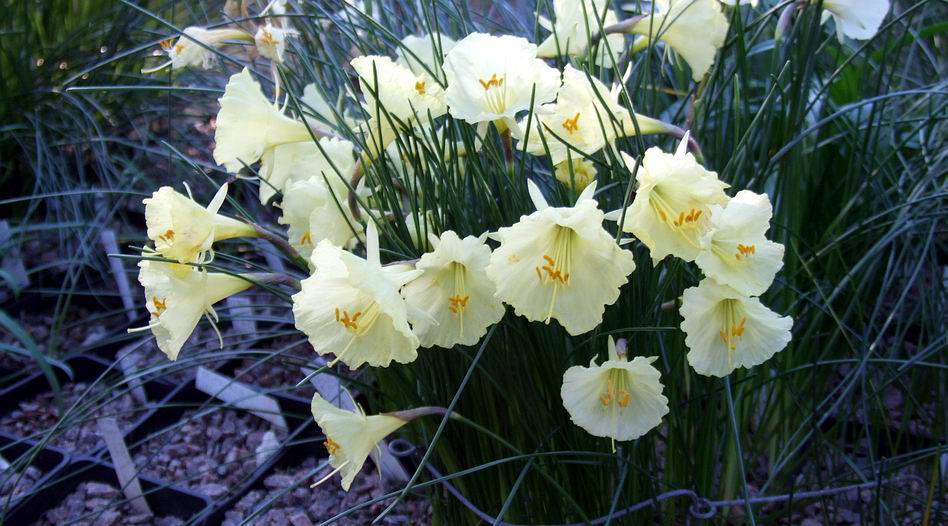
Narcissus romieuxii 'Craigton Clanger'
You can of course select out and bulk up certain clones separately like I have with 'Craigton Clanger' but I am also growing on all the other seedlings from the same batch.
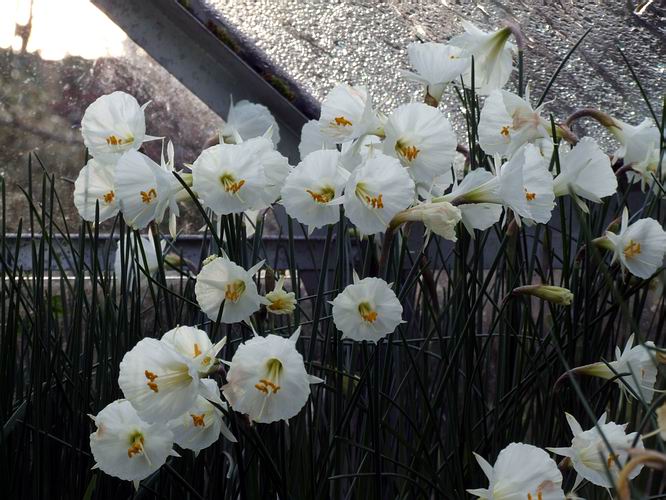
Narcissus 'Camoro'
We all have a big responsibility to preserve the widest genetic stock, of both species and cultivars, as we can in cultivation because we never know when we will no longer be able to rely on the reintroduction of wild collected seeds due to political and/or environmental factors.
^ back to the top ^
|

